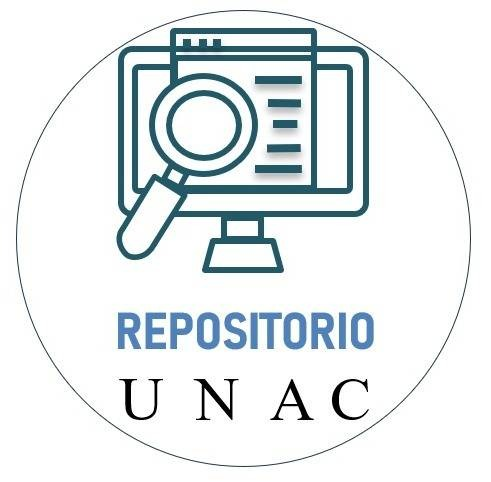Mostrar el registro sencillo del ítem
Elaboración de un material de fricción con alta resistencia al corte utilizando Resina Fenol Formaldehido e impregnada en telas de fibra de vidrio
| dc.contributor.advisor | Medina Collana, Juan Taumaturgo | |
| dc.contributor.author | Flores Lima, Artemio | |
| dc.date.accessioned | 2016-07-20T21:33:13Z | |
| dc.date.available | 2016-07-20T21:33:13Z | |
| dc.date.issued | 2015 | |
| dc.identifier.other | T.660.2.F65L | |
| dc.identifier.uri | https://hdl.handle.net/20.500.12952/381 | |
| dc.description.abstract | Para poder obtener un material de fricción con estas características, se buscó materiales adecuados que cumplan fehacientemente su función, uno de ellos y el más importante es la resina fenol-formaldehido, este sirvió como aglutinante y contribuyente de la dureza y resistencia del material, es por ello importante determinar sus caracteristicas físico.químicas, además de determinar las condiciones ótimas del proceso de obtención de dicho material. El procedimiento consistió en disolver la resina fenol-formadehido (elaborada y caracterizada) en alcohol etílico en una proporción de 50/50, una vez disuelta se procedió a impregnar la tela cardada de fibra de vidrio estableciendo parámetros adecuados de control, tales como tiempo de impregnación (50 min) y tipo de secado (aire caliente). Diseñado la formula del material en este caso de un disco dentado, la tela impreganda pasa el proceso de pre formado dando así la forma deseada, luego es sometido a un prensado donde se establecerá parámetros del proceso tales como presión (20,70 mpa), temperatura (150°c) y tiempo de prensado (8 min). Se realizaron pruebas de resistencia al corte por cizallamiento a los dientes del disco porque son estos los que estarán expuestos a una fuerza de corte. Para el tratamiento de datos se utilizó el método estadístico de la ANOVA y la pruebas de Tukey y Fisher. Mediante esta investigación se pretende dar una metodología limpia para la realización de materiales de fricción en forma específica para la aplicación descrita anteriormente. | es_PE |
| dc.description.abstract | In this work a friction resistant material developed shear cut, this movement will serve as transmitter and also as protector more delicate and expensive parts of industrial machines that may be exposed to vibration. To obtain a friction material with these characteristics, suitable materials that reliably fulfill their function, one and the most important is the phenolformaldehyde resin is reached, this will serve as a binder and contributor to the strength and toughness of the material is therefore important to determine their physicochemical characteristics, and to determine the optimal process conditions for obtaining such material. The procedure was to dissolve the phenol formaldehyde resin (prepared and characterized) in ethyl alcohol in a ratio of 50/50 dissolved once proceeded to impregnate fabric fiberglass carded establishing appropriate control parameters, such as time impregnating (50 min) and drying type (hot air). Designed shape of the material in this case a toothed disc, the impregnated fabric passes to process pre formed thus giving the desired shape, then subjected to pressing which process parameters such as pressure (20.70 MPa) is established, temperature (.150 o C) and pressing time (8 min). Resistance tests were performed at shear cutting teeth disk because it is they who will be exposed toa shearing force. For statistical data processing, method ANOVA and Fisher test was used Tukey. Through this research it is to give a clear methodology for conducting friction materials specifically for the application described above. | en_US |
| dc.description.uri | Tesis | es_PE |
| dc.format | application/pdf | es_PE |
| dc.language.iso | spa | es_PE |
| dc.publisher | Universidad Nacional del Callao | |
| dc.rights | info:eu-repo/semantics/openAccess | es_PE |
| dc.rights.uri | http://creativecommons.org/licenses/by-nc-nd/4.0/pe/ | * |
| dc.source | Universidad Nacional del Callao | es_PE |
| dc.source | Repositorio institucional - UNAC | es_PE |
| dc.subject | Phenolic resin | es_PE |
| dc.subject | Impregnation | es_PE |
| dc.subject | Shearing | es_PE |
| dc.subject | Toothed disc | es_PE |
| dc.subject | Resina fenólica | es_PE |
| dc.subject | Impregnación | es_PE |
| dc.subject | Cizallamiento | es_PE |
| dc.subject | Disco dentado | es_PE |
| dc.subject | ANOVA | es_PE |
| dc.title | Elaboración de un material de fricción con alta resistencia al corte utilizando Resina Fenol Formaldehido e impregnada en telas de fibra de vidrio | es_PE |
| dc.type | info:eu-repo/semantics/bachelorThesis | es_PE |
| thesis.degree.name | Ingeniero Químico | es_PE |
| thesis.degree.grantor | Universidad Nacional del Callao. Facultad de Ingeniería Química | es_PE |
| thesis.degree.level | Título Profesional | es_PE |
| thesis.degree.discipline | Ingeniería Química | es_PE |
| dc.publisher.country | PE | es_PE |
Ficheros en el ítem
Este ítem aparece en la(s) siguiente(s) colección(es)
-
Título Profesional [330]



